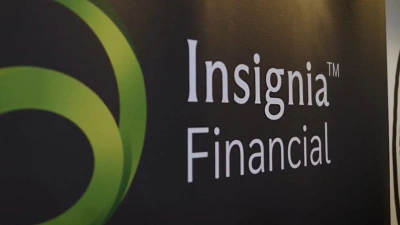Accounting for change among the top
Financial planners, accountants, life agents and stockbrokers are still the main players in the Top 100 game. Financial planners represent around 40 per cent of advisers in the industry — a small decrease from last year, when they represented slightly more than 41 per cent.
Advisers with a life industry background represent around 32 per cent, which is the same as last year. The number of stockbrokers trying to make the switch to financial planning is slowlyclimbing — they now represent just over four per cent of the industry as opposed to around 3.5 per cent last year.
Look Research’s Leo Wassercug says “stockbroking firms are realising that there’s money to be made from asset management fees as opposed to share transaction fees. This parallels the earlier movement of financial planners from commissions to fee-based practices.”
And then there’s accountancy-based planners who still represent around 23 per cent of advisers — a figure which has barely moved over the past four years.
“PIS has grown strongly, Count has hovered around 1,000 advisers for four years and while Pact has lost over 20 planners, they don’t seem to have suffered for it — they ranked 17 this year as opposed to 18 last year,” says Wassercug.
But that’s not to say that it’s been a quiet year for all of our accounting friends. In fact, it’s quite the reverse.
Lifespan has culled a few advisers — from 201 in 2001 to 157 this year — and has consequently slipped a few rungs on the Top 100, moving down from position number 21 to 25.
Lifespan’s John Ardino says: “It’s fair to say that a few of our advisers left because they were not viable, because of volume requirements and to some extent compliance due to PS 146.”
These advisers do, however, remain a referral source for the business and it shows — despite the loss of over 20 per cent of their adviser force, Lifespan has built funds under advice (FUA) to $900 million, up from $750 million last year.
“We are writing something in the order of $120-$150 million in new business each year,” Ardino says.
And then there’s the fun and games at ING.
ING’s dealer group Partnership Planning is an amalgamation of Bleakleys and Advisor Investment Services (AIS). In 1999, Bleakleys had 298 planners while AIS had 118. By 2000, Bleakleys had lost 43 advisers, bringing the combined total down to 373.
Some ex-Bleakleys advisers struck out on their own to form OzPlan, which has not been the standout success it might have been. It debuted in 2000 at position number 71 with 25 advisers and $550 million FUA, and has slipped down the table every year since — to position 87 in 2001 with 18 advisers and $410 million FUA to position 90 in 2002 with 20 advisers and $451 million FUA this year.
ING decided to merge Bleakleys and AIS, but not before culling the number of Bleakleys advisers by two-thirds. Partnership Planning started up as he new merged entity with only 104 advisers in 2001’s Top 100.
At the time, Partnership Planning general manager Mike Walker said a number of the Bleakleys predominantly accounting-based practices were unable to commit to growing their financial planning revenue to more than $200,000.But it wasn’t just Bleakleys advisers who didn’t join the new entity. Three of AIS’s highest earning practices in New South Wales decided they did not like the new structure and formed the boutique dealer group Avenue Capital Management. Avenue has met with some success and today sits at number 58 on the Top 100 table with 40 advisers and $780 FUA.
Partnership Planning now has only 86 advisers and the group will merge again into Tandem.
“Both moves to merge were flagged publicly but ING took some six months to announce them,” says Wassercug.
“The dwindling numbers spell change, uncertainty and dissatisfaction.
“ING took the opportunity to axe some advisers for performance reasons but advisers were also unhappy with what was happening and that led to them walking,” he says.
In announcing the merger of Partnership Planning with ING’s other planning businesses — Lynx and AustAdvisers — ING’s head of equity distribution Mike Goodall conceded that planner numbers could fall.
Goodall said some planners would be forced out of the consolidated dealer group for being unable to meet new competency benchmarks, while others would leave because they were uncomfortable with the merger.
The first to leave ING was the managing director of Lynx, Stuart Abley, who said he was not comfortable with the planned merger.
At the end of the day, despite all the musical chairs, ING appears to have lost out — Partnership Planning’s FUA have dropped to $1.2 billion.
In the heyday of Bleakleys and Advisor, combined FUA were exactly twice that figure at $2.4 billion. Times have, however, been worse. Last year FUA were only $800 million.
Recommended for you
Net cash flow on AMP’s platforms saw a substantial jump in the last quarter to $740 million, while its new digital advice offering boosted flows to superannuation and investment.
Insignia Financial has provided an update on the status of its private equity bidders as an initial six-week due diligence period comes to an end.
A judge has detailed how individuals lent as much as $1.1 million each to former financial adviser Anthony Del Vecchio, only learning when they contacted his employer that nothing had ever been invested.
Having rejected the possibility of an IPO, Mason Stevens’ CEO details why the wealth platform went down the PE route and how it intends to accelerate its growth ambitions in financial advice.














